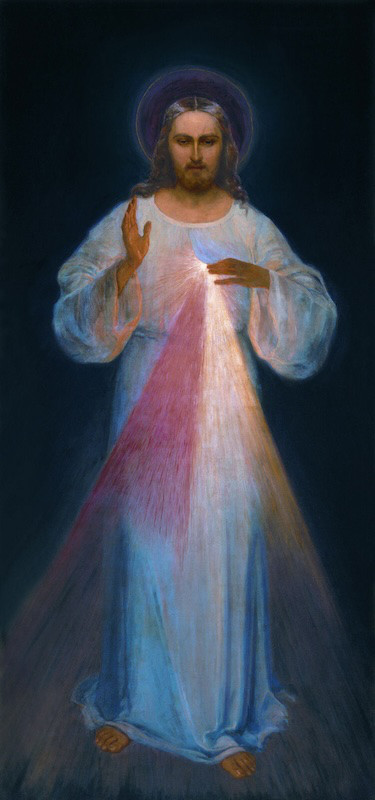
The Divine Mercy image is well-known and can be seen in many churches. What is less well-known is that the one we are familiar with was not the original version. The first painting was made in Vilnius, capital of Lithuania, under the supervision of St Faustina Kowalska and her confessor, Fr Sopoćko. She gave the artist instructions about the appearance of the image, which she said she had received from Jesus Christ in a vision. The final painting satisfied neither Fr Sopocko nor Faustina, but she later wrote that Jesus told her it was not that important for the picture to be beautiful since true beauty would be the blessing that he would bestow upon people by means of the painting.
After its completion in 1934, the painting hung in the Bernardine Sisters’ convent in Vilnius, but Faustina wrote that Jesus told her to inform her confessor that the proper place for the painting was in a church. So the first public exposition of the painting was in April 1935, at the Church of the Gate of Dawn in Vilnius, and then in 1937 it was put on display beside the main altar in the large St. Michael’s Church.
In 1948, the Soviet authorities, who then occupied Lithuania, closed St. Michael’s Church, but the painting remained in the disused church building until 1951, when two local women bought the canvas from a guard and concealed it in an attic for several years.
Later, they gave it to the parish priest at the Church of the Holy Spirit for safekeeping, but he chose not to display it in the church. Fr Sopocko, now living in Poland, expressed concern about it to a friend, who obtained the painting and moved it to his own parish church in Nova Ruda, in Belarus. There, it was displayed and venerated by the local parishioners. In 1970, the Soviets closed that church and used it as a storage warehouse but left the painting hanging in the disused church, where people continued to venerate it in secret.
In 1986, the painting was replaced by a copy and the original secretly transported back to the Church of the Holy Spirit in Vilnius. There it underwent a restoration and was displayed. Finally, after the fall of Communism, in 2003 the painting, which had deteriorated because of exposure, attempts at cleaning, and the previous restoration, was professionally restored to its original look. Finally in 2005, it was moved to its current location, above the main altar in the Sanctuary of Divine Mercy in Vilnius. So, four locations in Vilnius, then to Belarus and eventually back home to Vilnius.